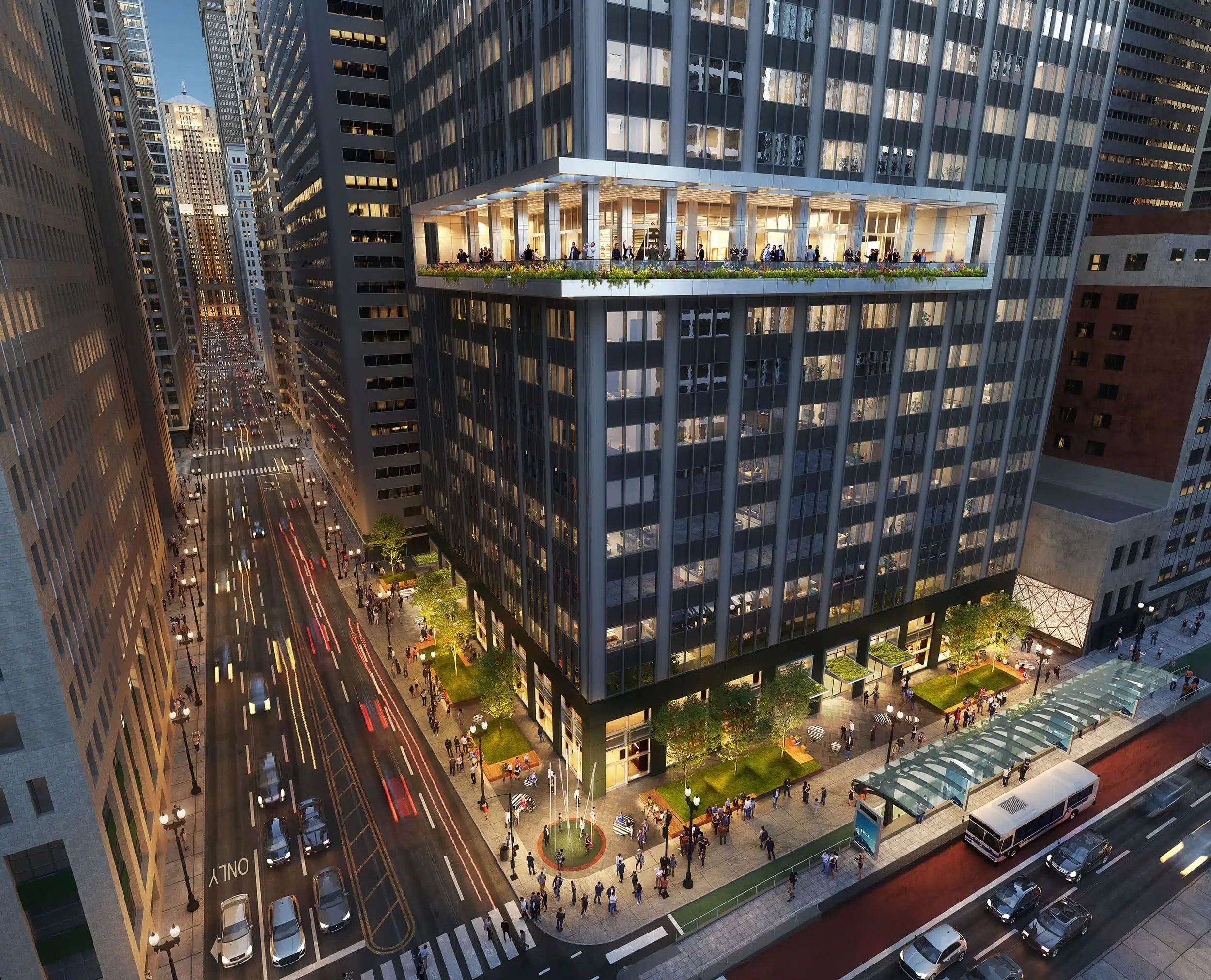- May 10, 2024
- Perspectives
Office-to-Residential Conversions: Adapting for Occupants’ Parking and Curb Needs


Jonathan Kerby, PE
Senior Project Manager

Peter Lemmon, PE, PTOE
Senior Transportation Engineer
In October 2023, the National Bureau of Economic Research (NBER) found “about 15% of office buildings in the commercial districts of the 105 largest cities in the US are physically suitable for conversion.” Turning them into residential buildings could add 171,470 units, using 875 square feet as the average apartment size and incorporating a 30% loss factor, according to NBER.
NBER didn’t quantify the number of possible units in suburban offices due to smaller sample sizes. But it observed, “The principles of office-to-apartment conversions apply equally to suburban and urban locations. Much of the suburban office stock in the US is functionally obsolete and ripe for conversion, much like the class-B urban office.”
This potential—coupled with increased housing demands, decreased housing affordability, and a possible rise in the number of empty offices—makes office-to-residential conversions a natural evolution for many urban and suburban buildings.
Beyond transforming commercial office spaces to apartments, developers must also tend to parking areas and curbsides for conversions to provide the maximum value. When occupants shift from workers to residents, their parking needs and curb usage drastically change too.
The challenges differ in downtown commercial districts compared to areas with more elbow room. But in both types of locations, city approval and satisfied residents are equally important. This means that developers must account for the competing needs of amenities, curb space, and traffic flow to gain both groups’ support.
Maximizing Common Spaces with Amenities
The variety and quality of offered amenities distinguish one building from another. Having top-notch amenities can also help building owners sell or lease units faster and at higher rates. Therefore, office-to-residential conversions typically transform common space into amenities wherever possible.
In urban locations, this could include a rooftop pool with a surrounding patio and a plaza-like area on the ground floor. It may also mean transforming a loading dock to a common area like a covered patio. Developers may then desire different curb access depending on pedestrian traffic outside the building, or they may want to request new pick-up and drop-off areas to accommodate where people will enter the building.
Suburban offices may see entire or partial parking lots transformed into courtyards and dog parks. In those cases, they may need new loading zones and drop-off areas—perhaps with new traffic patterns—that safely allow vehicles to access the residence without disturbing people in common spaces.
Accommodating More Urban Curb Drop-offs and Pick-ups
Curb uses differ vastly for offices versus residences. Offices often get a few package and mail deliveries and perhaps some ride-sharing or taxi visits during business hours. Residents, however, may get multiple Amazon or food deliveries throughout the day, especially in urban areas. Plus, city dwellers are more likely to regularly ride Uber and Lyft.
Further, urban buildings may border bus lanes and transit stops, which prohibit cars and trucks from pulling over. Developers must consider these differences and work with local authorities to find tailored solutions that satisfy agency requirements and developer objectives.
For example, an office building might have primarily used only one main entrance. As part of the residential conversion, developers can make ground floors more aesthetically inviting from multiple sides of the building to preserve public transit operations on one side and improve the curbside experience on another.
Guiding Road and Sidewalk Infrastructure with a Traffic Impact Analysis
Traffic volumes and peaks will differ when occupants shift from employees to residents. To best manage traffic flow, developers need a traffic impact analysis. This report may consider factors such as the number of new units, the number of vehicles per unit, parking agreements with nearby businesses, valet parking options, and the availability of public transportation options. The analysis will reveal:
- How traffic volumes will change in total and over the course of the day
- If current access points to parking areas remain the best options
- How vehicle traffic flow will impact pedestrian and cycling patterns
- If a new parking layout will require new signage
- If traffic signals will need re-timing to accommodate the new residential traffic patterns
After the office-to-residential conversion is complete, new residents will expect smooth entry and exits, and neighboring businesses and residents will expect minimal disruptions to their commutes from the new project. The traffic impact analysis findings will direct both developers and city planners to the changes needed in and around the property to streamline the integration of the revitalized building into the existing community.
Adapting to the Needs of Future Residents
Developers and planners can capitalize on a generational opportunity to repurpose office space for new residences. An essential component of that is navigating curb management and parking changes among property owners, city planners, transportation agencies, and community members.
Each building has a unique layout, location, and mix of amenities. Embracing creativity and considering the evolving needs of residents will contribute to the success of conversions and create vibrant, livable communities in cities and suburbs for decades to come.
Featured Image Attribution: Golub & Company and SCB
About the Authors

Jonathan Kerby, PE
Jonathan is a senior project manager and leader within Kimley-Horn’s North Texas team. He has 10 years of experience providing site civil consulting services for both public- and private-sector projects throughout Texas and the surrounding states. During his career, Jonathan has gained diverse knowledge in mixed-use, hospitality, municipal, multifamily, retail, office, entertainment, and commercial development projects. Specifically for multifamily developments, he has provided services on several types, including garden style, “Texas wrap,” podium, mid-rise, and redevelopments. Jonathan is passionate about problem solving for unique site layouts and access challenges. His goal is to create a development that not only meets the client’s goals but also provides safe access for vehicular and pedestrian traffic. Known for his commitment to success, Jonathan has built an excellent reputation among his clients and peers by producing high-quality deliverables, being responsive to client needs, and demonstrating superior coordination and communication with team members and municipalities.

Peter Lemmon, PE, PTOE
Peter has more than 25 years of experience managing and conducting numerous transportation engineering, mobility planning, parking analysis, and access/circulation studies for a wide range of project types and contexts. A focus area of his practice includes working with urban mixed-use developments and academic and healthcare institutions with multimodal sensibilities to safely balance the needs of pedestrians, cyclists, transit riders, and motorists. Regardless of the project type, Peter frequently presents study data, considerations, and key findings for both technical and non-technical audiences while collaborating with stakeholders to share recommendations, solicit input, and gain broad support on plans that factor in various perspectives and viewpoints.
